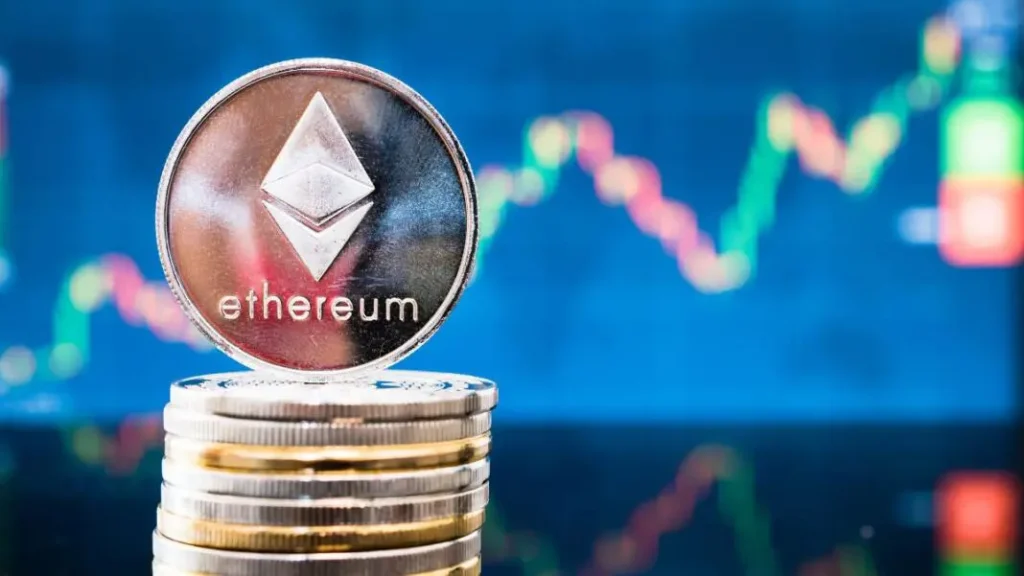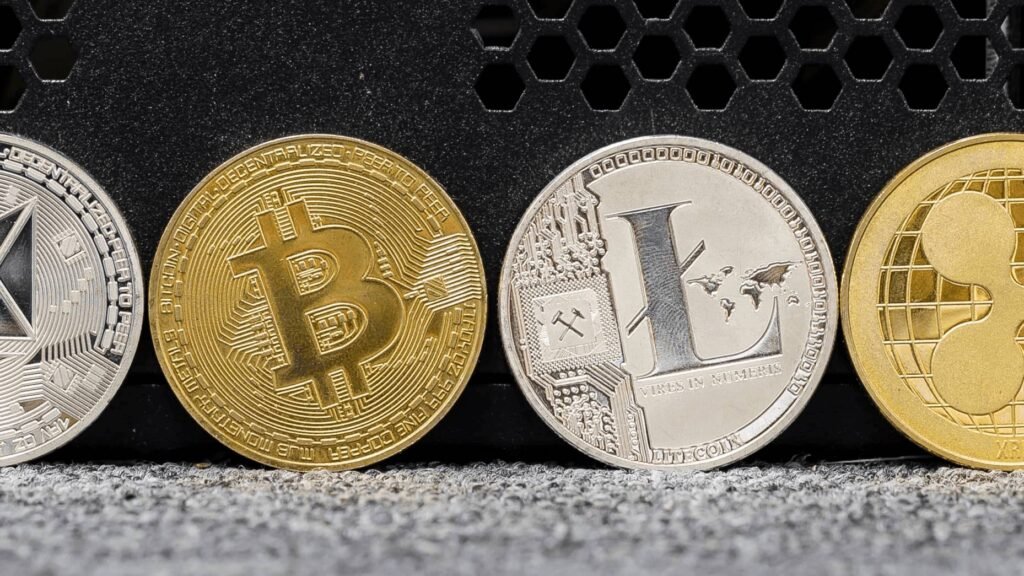2024 was a dynamic year with the explosion of BTC, AI agents, and memecoins, but it was also a year of many “tragicomic” stories
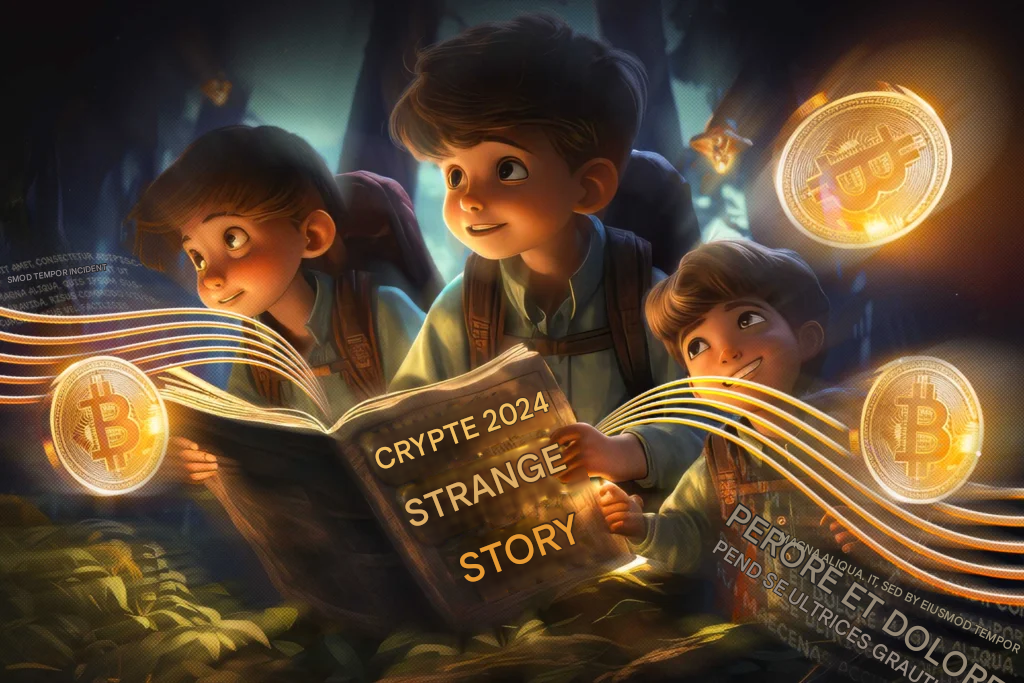
Justin Sun & His 6 Million Dollar Banana
A banana, a piece of duct tape, a wall, and someone willing to spend 6.2 million USD—that’s all it took to create the most talked-about auction in the crypto world this past year. In November 2024, Justin Sun, founder of Tron, paid 6.2 million USD to own the artwork: a banana taped to a wall.
Later, upon returning to his private residence, the Tron founder ate the artwork he had just successfully bid on. “This banana has a special flavor, unlike the bananas we eat every day,” Sun shared. Indeed, because this banana has the smell of money
Many people wondered if Sun’s act was a million-dollar joke or an artistic statement. “This is not just art but also an interesting cultural phenomenon, connecting the high-end art world, humorous memes, and the cryptocurrency community together,” he said

Sun also wanted to give others the opportunity to taste his million-dollar banana. He expressed his intention to buy 100,000 bananas from the same street vendor in New York—where he acquired the banana featured in the artwork—and distribute them worldwide. However, the banana seller declined, citing the impossibility of supplying such a large quantity of bananas in such a short time frame.
Tattooing the Wrong Memecoin Address, Demanding a Baguette Ransom, and Accidentally Burning 10 Million USD
Gigachad, an investor known as Hop on X, decided to express his love for cryptocurrency by tattooing a memecoin wallet address on his right chest. However, he tattooed the wrong address, though he still asserted: “I have no regrets.”
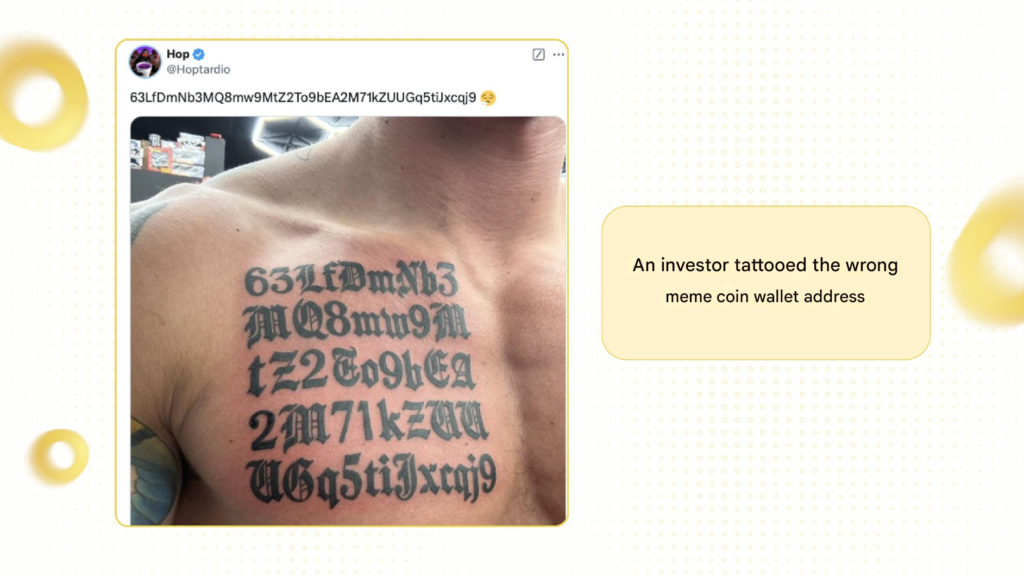
Another “strange story” unfolded in November 2024, when the Hellcat criminal organization launched a cyberattack on the electronics company Schneider Electric and demanded a ransom: either 125,000 USD in Monero or 125,000 USD worth of baguettes.
In an equally bizarre incident, in March 2024, a developer on Solana accidentally burned 10 million USD in the liquidity pool of the memecoin project SLERF they were developing. This was the portion of tokens intended for an airdrop to the community
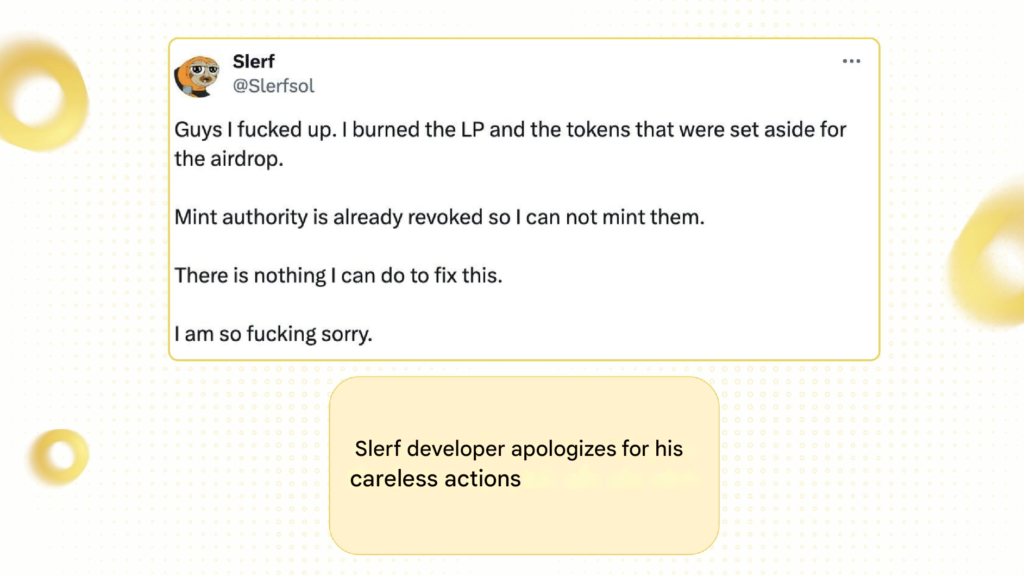
However, instead of collapsing, the project experienced strong growth. Within 12 hours of the incident, the memecoin reached a trading volume of 2 billion USD and attracted over 74,000 investors. Many believe that the accidental burning of tokens in the liquidity pool created a scarcity effect, stimulating buying demand and driving the price of SLERF up.
10-Year-Old Boy Creates Memecoin, Earns 30,000 USD on Livestream
On November 20, 2024, 10-year-old Griffin created the memecoin QUANT (Gen Z Quant) on the platform pump.fun and livestreamed the entire process. Griffin then used 348 USD to purchase 51 million QUANT tokens that he had created. The livestream quickly gained traction, with many people rushing to buy QUANT, pushing the project’s market capitalization to 2 million USD in just a few minutes.
Seeing this, Griffin decided to sell all of his tokens, netting him 30,000 USD. He exited the livestream and bid farewell to his “investors” with a middle finger salute. The investors were enraged and rallied together to buy QUANT, pushing the project’s market capitalization to 85 million USD, just to make Griffin “regret it.”
When the Scammer Becomes the Scammed
In May 2024, the Federal Bureau of Investigation (FBI) created the AI token NexFundAI as “bait” to lure scammers in the crypto space. NexFundAI quickly attracted market manipulators who promoted the project and enticed other investors to participate. As a result, the FBI successfully apprehended 18 scammers

However, the incident sparked debate about copyright issues in the technology sector. Lawyer Charlyn Ho of Rikka Law firm argued that the FBI had violated copyright law by developing a smart contract based on an MIT-licensed source code.
But some other experts hold the opposite view. They believe that the highly flexible MIT license allows the FBI to use the source code extensively, as long as they comply with the basic conditions stipulated in the license.
Livestreaming Self-Immolation to Pump a Memecoin
In an attempt to garner attention for his project, on May 22, 2024, Mikol, the developer of the memecoin TruthOrDare (DARE), had his friends douse him in isopropyl alcohol and then shoot fireworks on a livestream. As a result, flames engulfed Mikol’s body, and his panicked friends rushed to extinguish the fire, but with little success. Some have estimated that Mikol likely suffered third-degree burns over 35% of his body.

Mikol’s intentions weren’t entirely in vain, as just hours after the incident, the market capitalization of the DARE memecoin skyrocketed to over 370,000 USD and peaked at 450,000 USD two weeks later. The online community also launched a GoFundMe campaign to help Mikol cover his medical expenses, raising over 3,000 USD. The developer promised not to engage in such “reckless stunts” in the future.
Using Memecoins to Help a Brain Cancer Patient
Amidst the “spine-chilling” stories, there were also heartwarming events in the crypto world this past year. Chinese programmer Siqi Chen appealed to the community for help in finding treatment for his daughter Mira, who suffers from a rare brain cancer. Within hours of posting, Chen’s plea raised 75,000 USD.

Siqi Chen shared his daughter’s story and quickly received support.
An anonymous individual also created the memecoin MIRA inspired by this story, then allocated half the supply to Siqi Chen. Within hours of its launch, the MIRA token reached a market capitalization of over 78 million USD at one point.
The creator of MIRA pledged to use all proceeds from the token sale to fund the Hankinson Research Lab in its pursuit of finding an effective treatment for Mira’s condition. To ensure transparency, Siqi Chen also shared that he would sell 1% of the tokens daily to maintain the project’s liquidity
